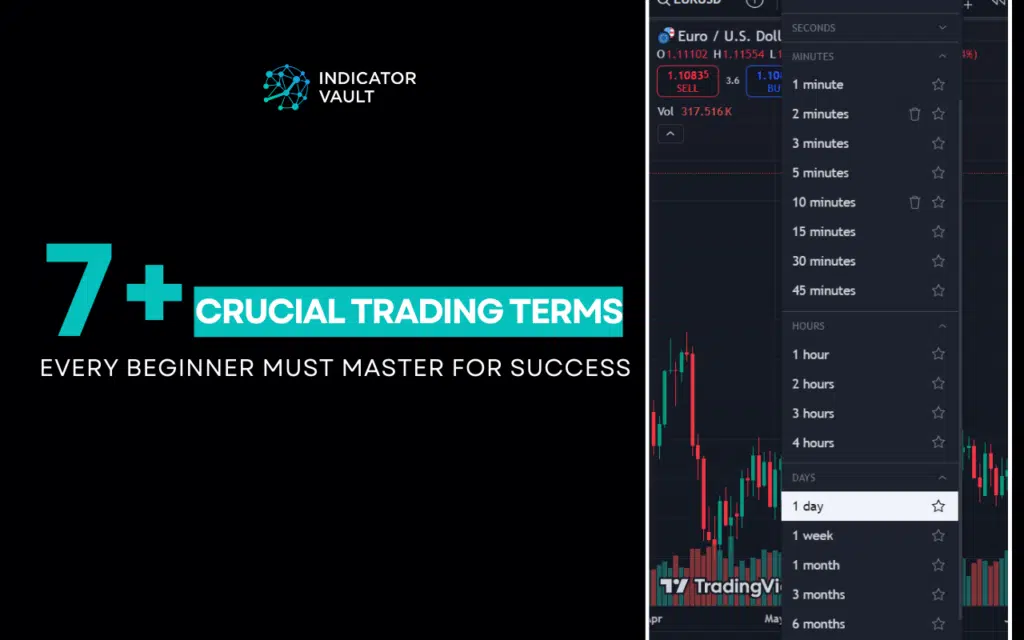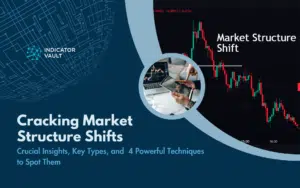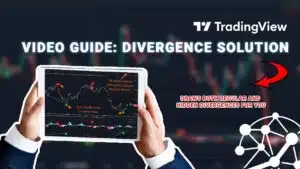It’s easy to get discouraged by the complexities of trading as a beginner. However, learning the trading terms may be the most vital step in the journey.
Table of Contents
1. Introduction
It’s easy to get discouraged or carried away with the complexities of trading. The discipline continues to become more multifaceted due to fast-rising participation. Fortunately, learning the trading terms is arguably the most vital step in the study journey.
Continue this concise article to learn some of the most basic yet essential fundamentals every beginner should understand. Readers will also receive exclusive access to a world-class technical tool to simplify the process and enjoy assured success.
2. Financial Market
A financial market (or simply, market) is where traders buy and sell financial securities and derivatives.
A few of the most popular ones include:
- Stock market, featuring stocks (equities) as the primary instruments
- Foreign exchange (forex) market with currency pairs and currency futures
- Bond market for exchanging bonds (government or corporate)
- Commodities market that allows trading of physical commodities, like gold and silver
- Cryptocurrency market where cryptocurrencies, including Bitcoin and Ripple, change ownership
Basically, every trading action as a financial trader directly or indirectly happens in the markets.
3. Time Frame
A time frame in trading refers to the period in a chart that a trader analyzes the market. It can vary from a few seconds to months, depending on the trading platform.
For example, TradingView charts provide time frames in ticks, seconds, days, months, and ranges.
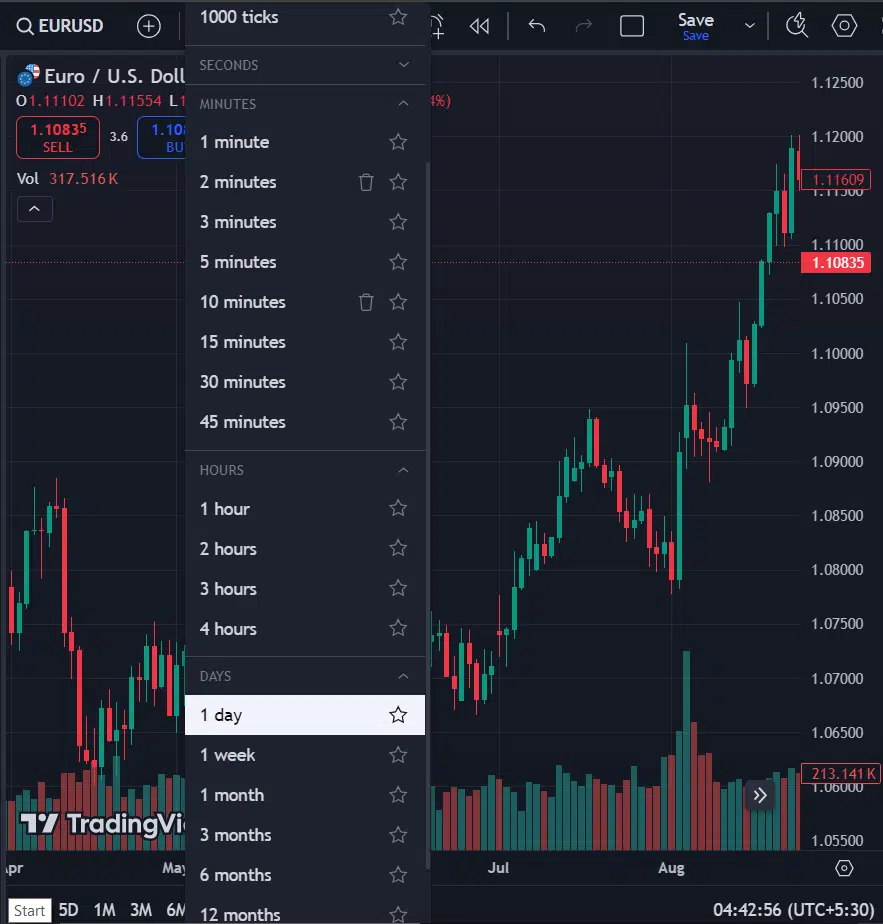
Proper time frame selection is one of the most crucial actions every beginner must take.
4. Leverage
Leverage is an action that involves trading with borrowed funds to increase the potential returns. It allows traders to use much more money than they invested.
Although it’s beneficial to trade with a significantly increased amount, leveraging magnifies losses. Hence, traders must be careful with it.
The deposit demanded for leveraging is termed margin, and its comparison with the total amount is the leverage ratio.
5. Currency Pair
Currency pairs are quotations of the relative value between two currencies in the forex market. Experts classify them as major, minor, and exotic based on the particular currency type they contain.
Some of the most common pairs include:
- EURUSD – Euro and US Dollar
- GBPUSD – Great Britain Pounds and US Dollars
- NZDJPY – New Zealand Dollar and Japanese Yen
- EURGBP – Euro and Great Britain Pounds
- USDPLN – US Dollars and Polish Zloty
6. Bullish and Bearish
Bullish and bearish are popular terms that describe the expected market condition (trend) at any time. The former indicates the anticipation of higher prices, while the latter is lower.
Therefore, a bullish investor (or bull) is optimistic about a security’s price surge, while a bearish one (or bear) is hopeful for a price fall.
Both expectations can be beneficial depending on one’s strategy.
7. Stop Loss and Take Profit
Stop loss and take profit are trading terms that describe risk management orders to prevent further losses or secure profits.
The stop loss order (stop order) closes an already-losing trade to prevent worsening and possible margin calls.
On the other hand, a take profit order secures profits already made to some extent from an open position by closing it automatically.
8. Short Selling
Short selling (or going short) involves selling an asset (after borrowing) to repurchase it at a lower price. It allows traders to earn from a downtrend (bearish trend).
In CFDs, where there is no ownership of the underlying asset, only the difference between the trade’s entry and exit points matters.
A short trade can be profitable if the market falls after the sale.
Conversely, it results in a loss when the price rises.
9. Going Long
Going long is the opposite of short-selling, as traders expect higher prices soon.
It is a straightforward procedure relatable to the mainstream trading idea of buying low and selling high for profit.
If the interested markets rise eventually, long traders profit off their positions.
Traders can go long on any security or derivative across every financial market but must prepare for possible losses.
10. Defying the Odds With an Unbeatable Technical Tool for TradingView
The learning curve of a newbie trader can be considerably challenging without proper guidance. Every facet of the financial market demands meticulous attention.
Thus, traders need all the assistance possible to exploit the markets satisfactorily.
One of the most recommended options is Indicator Vault’s Trend Focus for TradingView.
The groundbreaking invention is an improvement to the traditional Moving Average, which lags among other significant flaws.
The Trend Focus avoids lags, doesn’t repaint, and reduces noise spectacularly to give every user an edge over the markets.
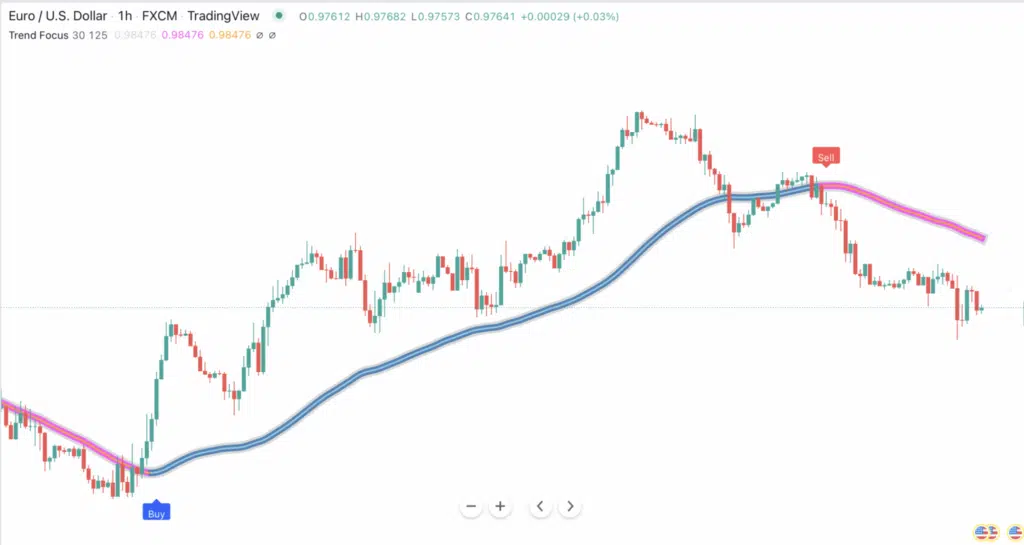
Below is a brief summary of the benefits every subscriber stands to gain from the indicator:
- Knowledge of the most promising trading opportunities in live conditions
- Awareness of fake price runs at the earliest times possible
- Liberty to explore any financial market, including stocks, cryptocurrency, commodities, etc.
- Flexibility to adopt any strategy due to the tool’s multifunctionality
- Assurance of taking every opportunity owing to the dependable trading alert system
Doubt these? Click here to confirm more benefits and skyrocket your trading journey today!
11. Final Thoughts
The intricacies of trading may be too exciting or discouraging for first-timers. Therefore, it’s always advisable to take a systemized approach to the learning process.
A significant part of that involves understanding basic trading terms like those discussed above. It improves learners’ decision-making skills while building confidence and communication skills in related discussion circles.
Traders of all experience levels can also employ the highly recommended Trend Focus tool to improve one’s overall market performance.
Please share this article with every friend and acquaintance interested in trading, and remember to leave a comment below.

